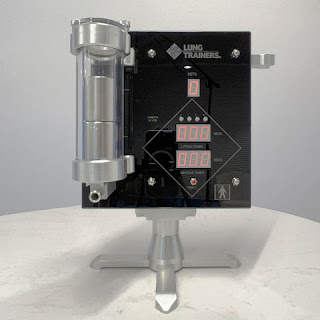Breathing Exercises For Singing and Other Types of Performers
Perhaps singers are the most obvious types of performers to benefit from breathing exercises. It's quite easy to see why: proper breathing helps to steady a persons voice when they reach the upper and lower limits of their vocal range, and, of course, allows the singer to maintain a single note or phrase for a considerable amount of time. This is especially important for singers who go through classical training. Still, being able to hit and hold a note isn't just for opera and choral singing. More "modern" forms of music have these elements, too.
Breathing exercises for singing are quite special because it can be difficult to draw a line between routines that are meant to strengthen the lungs and diaphragm and those that are meant to "warm up" the vocal chords before actual singing begins. Actually, normal vocalization exercises can also double as breathing exercises for singing (you usually sing up and down one scale in a single breath). It's quite a good deal, since you get to kill two birds with one stone. Traditional vocalization exercises can be augmented with sports-oriented activities.
Singers who are also regular swimmers or runners might find that they have an edge over other vocal performers when it comes to controlling their breath.Musicians can benefit from a good pair of lungs, too. The practice known as circular breathing is especially useful for those who play wind instruments. (If you have a cruel conductor given to long fermatas near the big finish of certain pieces, you will know how difficult it can be to sustain a long note.) Circular breathing involves simultaneous inhalation and exhalation.
This means that you can still keep blowing through your interminable fermata while getting the air you need. It is a very difficult thing to learn, and even skilled musicians have a hard time doing it very well. For example, their exhalations may become weaker whenever they inhale, which results in fluctuations in volume and sound quality. Also, learning circular breathing is not like riding the proverbial bicycle. You do not just learn it once, and then rely on it to come back to you later on. This skill can be lost without regular practice, so establishing a routine and staying committed to it is very important.
Actors need breathing exercises, as well. Modern theaters may be equipped with many microphones (at least, the theaters with enough funding are), but an actor still has to worry about maintaining a strong, expressive voice, especially if he or she is fortunate enough to get plenty of work. Actors' exercises can be similar to those of singers, except with less emphasis on pitch. No matter what type of performance you do, a fit pair of lungs and a strong diaphragm will be a great asset, along with stage presence and a thick skin.
Keith Tennent is a medical researcher and a fitness enthusiast. He has overcome personal health difficulties and now teaches others to improve their health. His technique is simple and takes literally a few seconds each day. Best of all, anybody can do it. Whether your interest is in improving your mental health in things like concentration and memory, or your physical health like overcoming arthritis or asthma.

Comments
Post a Comment